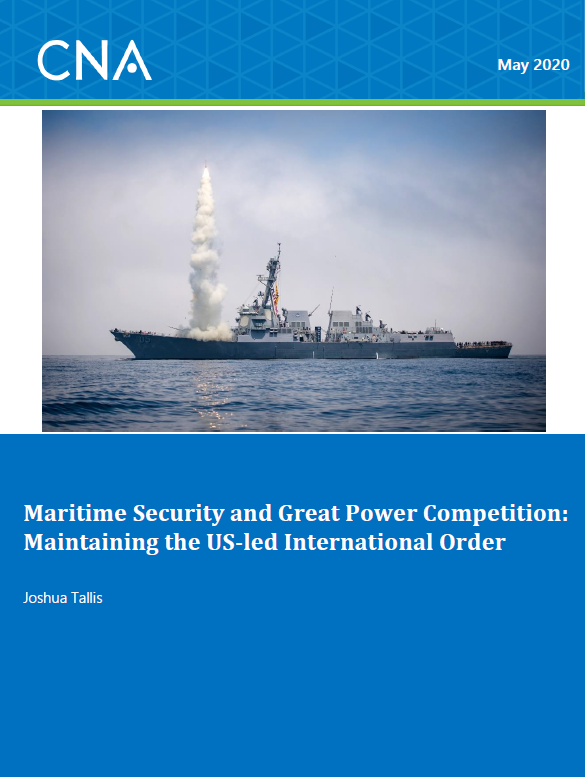Great power status reflects a state’s outsized stake in, or effect on, the international order. Defined this way, great power competition (GPC) is more than just a matter of conflict—it is a battle over the order itself. Yet analysts have struggled to articulate precisely what it means for great powers to compete on a day-to-day basis. This challenge is particularly problematic for the Navy, whose deployments may not always fit into a narrative focused on conflict. Maritime security operations—the activities that sustain the rule of law at sea—figure heavily in the Navy’s daily tasks. In an era of GPC, do such activities support national strategy? If so, how? And what does that mean for Navy policy as the force faces ongoing pressure to prepare for high-intensity conflict?
Competitors and competition in GPC
To answer these questions, it is useful to target how maritime security intersects with national
strategy. And to do that, we built a framework that simplifies strategy along two axes:
- Types of competitors. Competitors are a strategy’s adversaries, which are described nd categorized differently over time. Presently, US strategy differentiates among great powers (China and Russia) and lesser powers (Iran, North Korea, and nonstate actors such as ISIS).
- Types of competition. Competition is the nature of the US’s interaction with adversaries. A common tool for describing competition is conflict spectrums, spanning high-intensity armed conflict to less-intense forms of competition.
When we plot these axes (Figure 1), we can see four categories of strategy emerge:
- Preparing for or executing high-intensity conflict with a great power
- Competing with a great power in less-intense forms of competition
- Competing with a lesser power in less-intense forms of competition
- Preparing for or executing high-intensity conflict with a lesser power.
DISTRIBUTION STATEMENT A. Approved for public release: distribution unlimited.
Public Release.
Details
- Pages: 48
- Document Number: DOP-2020-U-025085-Final
- Publication Date: 5/1/2020
